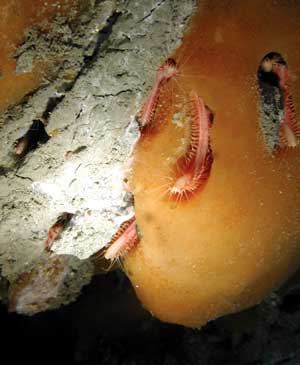Methane Hydrate Production "Within A Decade"
Ray Boswell, who heads the hydrate programme at the US department of energy's national energy technology laboratory, said the US was determined to be the first to mine the resource."Commercially viable production is definitely realistic within a decade. The world is investing in hydrates, and one reason for us to do this is to maintain our leadership position in this emerging technology."
Methane hydrates, or clathrates, appear randomly, sometimes in small clumps, and sometimes in large fields. Oil companies drilling for other things inadvertently cause methane bursts when they disturb such fields. Boswell, aboard the Uncle John, hopes to find clathrates so oil companies can avoid them, and exploiters can know where they are. The USGS has already identified a large number of deposits around the Americas.
According to a recent Wired piece, 200 quadrillion cubic feet of methane hydrates could exist beneath the world's oceans, and would be enough to keep the US in energy for decades. Onshore hydrates may be even easier to find and exploit:
Japanese and Canadian research in the Arctic has proven that economically viable quantities of methane can be obtained from onshore hydrates, he said. While Alaska's land-based Arctic methane hydrates are limited, the amount of offshore marine hydrates there and elsewhere is far greater.One of the big problems of clathrates is finding them. They don't yield easily to 2-D seismic surveys commonly used in oil and gas drilling, though 3-D surveys seem to work better. In this Meme Magazine piece, Boswell says that substantial advances in the last ten years may make clathrate gas production commercially viable very soon:
Work at the Mallik site in the Canadian Arctic over the past seven years has definitively established that production of methane from hydrates can occur using existing well-based technologies. Furthermore, based on the results of the scientific production response tests conducted at Mallik in 2002, it is now believed that depressurization can result in significant and economically viable volumes and rates of methane production. Research reported at a major petroleum geology conference in September 2004 indicates that, by leveraging existing infrastructure, production can be economical at gas prices on the order of $4 to $6 per thousand cubic feet.Natural gas is already well over that price (averaging just over $7.00 Mcf).




<< Home